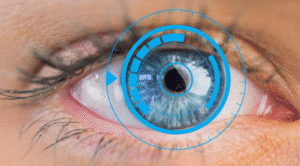In 1924, Hans Berger invented what would become on e of the most significant breakthroughs in neuroscience – the electroencephalogram (EEG).
EEG provides a reliable way to measure spontaneous electrical brain activity, more commonly known as brainwaves. One key metric it measures is event-related potentials (ERPs) like the P300 (P3).
P300 isn’t only relevant within the field of neuroscience. The brainwave has also gained significant attention in the polygraph community, with many suggesting it might empower lie detector tests to reveal the psychology behind deception.
But are these claims founded on solid research?
Let’s find out.
What Is P300?

The P300 is an event-related potential component produced during decision-making. An event-related potential is a measure of the brain’s response triggered by specific cognitive, sensory, or motor events.
ERPs provide a noninvasive way to study the association between brainwaves and various stimuli. Like most ERPs, P300 is an endogenous potential, which means external factors are largely responsible for eliciting the brainwave.
Measuring P300 enables us to gauge the impact of certain external stimuli on an individual. For instance, you can determine if a statement struck the person’s nerves, if they’re familiar with a particular scent, etc.
P300’s ability to reveal the psychology of the human brain explains why it might have a promise in the development of lie detector machines. If properly analyzed, P300 brainwaves could potentially enable examiners to improve the credibility of their polygraph tests.
But as you shall find, the relationship between the two techniques is rather nuanced.
How Is P300 Measured?

P300 is a brainwave response that can be measured with an electroencephalogram (EEG). While most examiners do not currently use EEG in routine lie detection, researchers note it may hold promise for future equipment development.
The P300 is often studied using an oddball paradigm, a technique in which a subject responds to infrequent stimuli known as oddballs among repeated standard ones. The idea is to determine the participant’s awareness of low-probability target items among the high-probability neural ones.
Here’s an illustration of how an oddball paradigm works;
Let’s say a murder suspect committed the heinous crime in a small town known as Charleston. As part of the investigations, a detective comes up with a list of ten cities and inquires if the suspect is familiar with them.
Nine out of the ten cities are common knowledge. The suspect must have heard about them, even if not necessarily visited each one of them. But the tenth, Charleston, is a small town with no more than a few hundred residents.
Each response is recorded using an electroencephalogram.
If the equipment records a positive deflection in voltage with a latency between 250 and 500 milliseconds (ms), that’s an indication of an activated P300. In other words, the suspect is aware of the tiny, sparsely populated town, which happens to be the setting of the murder.
What Does P300 Reveal?
To interpret what P300 reveals about the human mind, it’s important to understand that the brainwave is measured in two metrics.
First is the P300 amplitude, also known as strength. This denotes the peak voltage generated during the oddball paradigm.
Then, there’s P300 latency or delay. Latency represents the duration it takes for the amplitude to form after a participant is exposed to a stimulus.
Overall, P300 indicates potential awareness of intimate information. It represents an individual’s attention and memory.
P300 reveals whether a participant was attentive during the stimulation, and how long it takes to refresh their working memory before reacting to the stimulus. As noted, all this happens in milliseconds.

P300 and Lie Detection
The polygraph and forensic psychology are intertwined. Both practices share common techniques, such as the Concealed Information Test (CIT).
Now, polygraph questions broadly fall into three major categories – Relevant, Control, and Irrelevant questions. However, many examiners also use the CIT, a technique that assesses an examinee’s involvement or knowledge of secret crime-related information.
To administer a Concealed Information Test, an examiner would pose a series of crime-related questions. Some statements are factual while others are false. They then record the examinee’s physiological reactions to each question in real time.
Commonly measured responses include increased breathing, elevated heart rate, and a spike in skin conductivity.
A stronger response indicates knowledge of a crime-related fact that only someone familiar with the incident or the actual perpetrator would know.
The CIT has long been used alongside P300, and the findings have been incredibly accurate. By eliciting a stronger response to crime-related information than general ones, a subject can be pressed further on their potential involvement in the incident.
Understanding the Limitations
P300-based CIT is remarkably effective at identifying guilty knowledge. But just like regular polygraph tests, the technique isn’t 100% accurate.
It’s important to keep an open mind while incorporating P300 into lie detector tests.
At best, P300 can only detect knowledge of concealed information. It doesn’t actually point to a participant as the perpetrator.

Leveraging P300 Brainwaves to Improve Polygraph Accuracy
P300 brainwaves may not reveal lying directly. However, they can prove that a polygraph examinee is familiar with intimate crime-related information.
Just like forensic science, polygraph examiners may rely on P300 while administering a Controlled Information Test. A stronger pattern of response to CIT questions reveals that the examinee potentially knows more than they’re letting on.
Note that the P3’s role primarily entails transferring information to consciousness. While that may disclose knowledge of intimate facts, it’s not 100% proof of guilt.
That’s where professionals come in.
In the future, an experienced polygraph examiner might deploy P300 alongside other forensic techniques to improve the accuracy of their lie detector tests.






